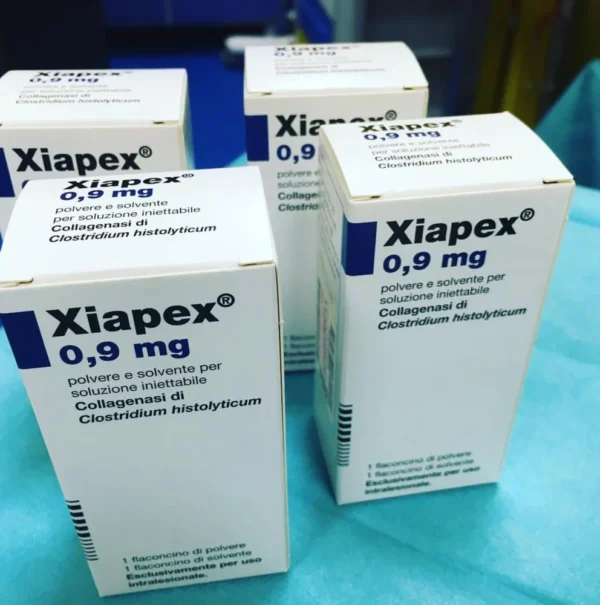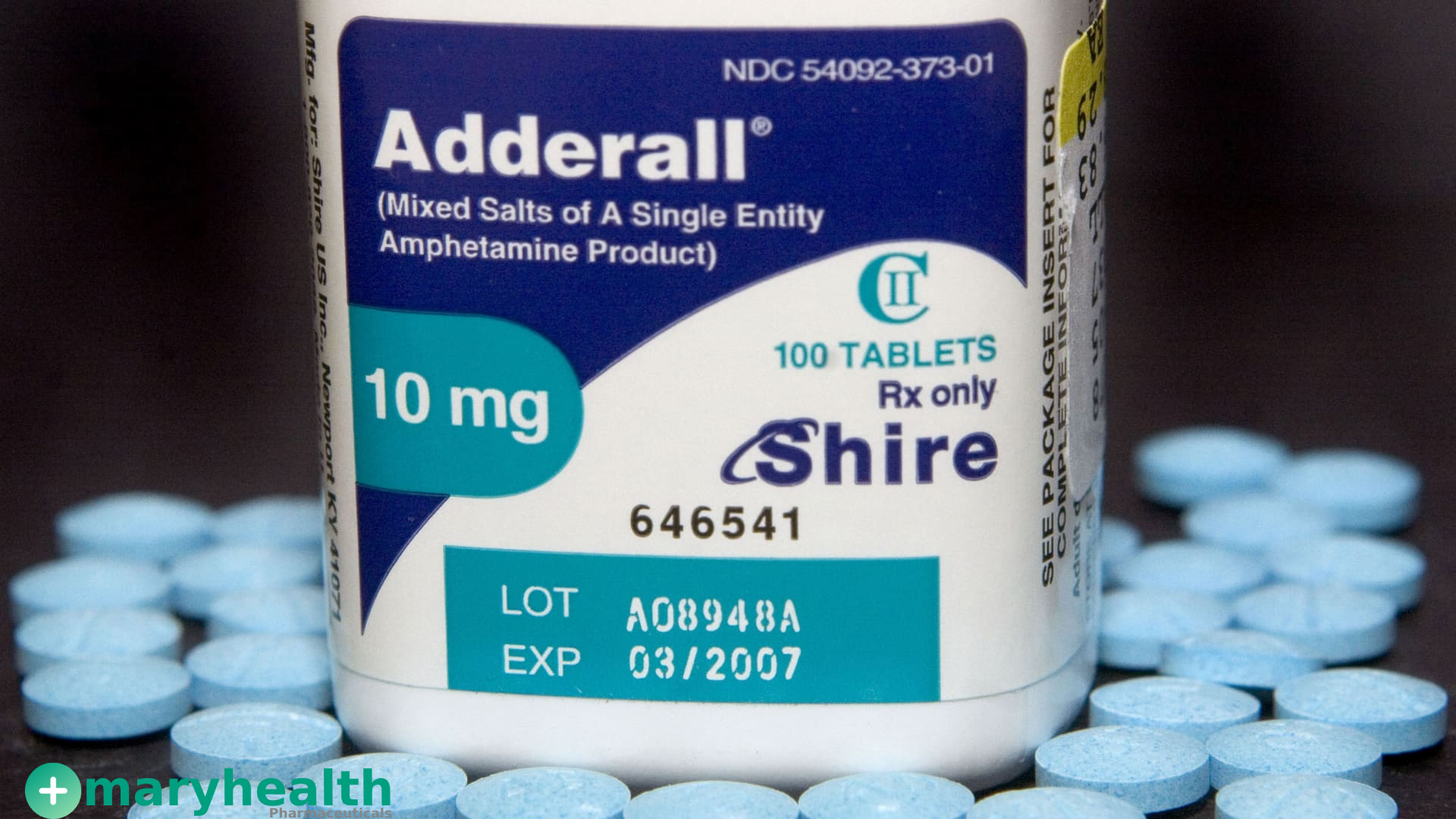Table of Contents
Introduction to Xiapex
Xiapex is a biologic medication that primarily comprises collagenase, an enzyme specifically designed to dissolve collagen. This innovative therapeutic agent plays a pivotal role in the treatment of certain medical conditions characterized by the formation of excess collagen. Notably, it is approved for two distinct disorders: Dupuytren’s contracture and Peyronie’s disease, both of which involve structural abnormalities linked to collagen buildup.
In Dupuytren’s contracture, the abnormal thickening of collagen in the palmar fascia leads to a curling of the fingers, significantly impacting hand function. Collagenase injections, such as Xiapex, work by breaking down the excessive collagen fibers, thus allowing for a more functional range of motion in affected digits. The injection procedure is minimally invasive and has gained popularity due to its effectiveness and the reduced recovery time compared to traditional surgical methods.
Conversely, Peyronie’s disease involves the formation of fibrous plaques in the penis, resulting in painful and abnormal curvature, which can lead to painful erections and difficulty during sexual intercourse. The collagenase treatment offered by Xiapex helps in reducing these plaques, enhancing the deformity correction and improving overall sexual function.
Furthermore, the significance of collagenase as a therapeutic agent cannot be understated. By targeting the underlying collagen pathology, Xiapex addresses the root cause of these conditions, offering patients a remarkable alternative to more invasive surgical procedures. As we delve further into this topic, understanding the precise uses, dosage guidelines, and potential side effects of Xiapex will provide a comprehensive view of its impact on patient care and treatment outcomes.
Uses of Xiapex
Xiapex, composed of collagenase clostridium histolyticum, is primarily indicated for the treatment of specific medical conditions, primarily Dupuytren’s contracture and Peyronie’s disease. Dupuytren’s contracture is a hand condition characterized by the thickening and shortening of the palmar fascia, leading to difficulty in straightening the fingers. The condition often progresses gradually, and patients may experience symptoms such as nodules on the palm, as well as progressive finger flexion that may hinder daily activities. The administration of Xiapex injections helps in breaking down the collagen deposits within the contracted cords of the fascia, thereby facilitating an increase in the range of motion and restoring hand functionality.
The treatment process for Dupuytren’s contracture using Xiapex generally involves one or more injections, followed by a finger extension procedure to maximize the therapeutic effect. Typically, the improvement is observable within days, offering patients an effective non-surgical alternative to manage their symptoms, particularly for those in the early stages of the contracture.
In addition to Dupuytren’s contracture, Xiapex is also applied in the treatment of Peyronie’s disease, a condition characterized by abnormal curvature of the penis due to fibrous plaque formation. This curvature can result in discomfort and difficulty during sexual intercourse. Xiapex works by enzymatically breaking down the collagen in the plaque, leading to a decrease in penile curvature and improved erectile function. The injection not only enhances the sexual experience for affected individuals but also contributes to psychological well-being by alleviating the distress associated with this condition.
Through these applications, Xiapex offers hope to individuals struggling with debilitating conditions caused by collagen-related pathologies, while also promoting greater awareness of its therapeutic potential.
Mechanism of Action
Xiapex collagenase injections are designed to target and disrupt the abnormalities associated with conditions such as Dupuytren’s contracture and Peyronie’s disease. The primary active component in Xiapex is a purified form of collagenase, an enzyme that specifically breaks down collagen, a protein that provides structural integrity to connective tissues. The therapeutic effectiveness of Xiapex lies in the way it interacts with and degrades the collagen-rich structures that result in tissue abnormalities.
When injected into the affected area, collagenase enzymatically cleaves the collagen fibers in the thickened nodules and cords. This process begins with the binding of the enzyme to collagen substrates, leading to a conformational change in the collagen molecules. As the collagenase molecules cleave the peptide bonds within the collagen triple helix, it facilitates the breakdown of rigid structures. This biological mechanism effectively softens the contractured tissue, offering a pathway for improvement in mobility and cosmetic appearance.
The reduction in collagen density resulting from the enzymatic action of Xiapex helps to alleviate the tension within the affected tissues, which is critical in managing conditions characterized by excessive collagen accumulation. The clinical implications are significant; by promoting the breakdown and resorption of abnormal collagen deposits, Xiapex collagenase not only addresses the physical signs of contracture or curvature but also enhances the quality of life for patients. This restoration of normal tissue architecture and function underscores the importance of understanding the mechanism of action, as it informs both the administration of the treatment and the expected outcomes for patients seeking relief from these debilitating conditions.
Dosage Guidelines

Xiapex (collagenase clostridium histolyticum) is a significant therapeutic option for patients with specific conditions, such as Dupuytren’s contracture or Peyronie’s disease. Understanding the correct dosage is crucial for optimizing treatment and ensuring patient safety. The recommended dosage for Xiapex injections varies depending on the condition being treated and individual patient factors.
For Dupuytren’s contracture, the standard dosage is typically one injection into the affected cord, with the maximum dosage not exceeding 0.58 mg per session. This treatment is usually repeated after a minimum of 30 days, allowing adequate time for the structural changes to occur in the collagen tissue. In many cases, follow-up treatments may be necessary, and the total number of injections needed can vary from patient to patient.
In the case of Peyronie’s disease, the recommended dosage and administration can differ significantly. The injection protocol commonly involves administering one injection directly into the plaque at a dose of 0.5 mg per session. The treatment regimen is usually comprised of up to 4 injections over a period of 12 weeks, with dosages potentially adjusted based on individual responses and the severity of the condition.
Factors influencing dosage adjustments for both applications may include patient age, weight, overall health status, and any adverse reactions experienced during previous treatment sessions. For instance, older patients or those with comorbid conditions may require cautious dosing due to increased sensitivity to the drug. Continuous assessment of patient reactions plays a vital role in determining any necessary modifications to the prescribed dosage.
It is essential for healthcare providers to follow established guidelines while also tailoring the treatment protocol to meet the unique needs of each patient effectively. This individualized approach can maximize the benefits of Xiapex collagenase injections while minimizing potential risks.
Procedure for Administration
The administration of Xiapex collagenase injections involves a well-defined procedure that must be adhered to in order to ensure safety and efficacy. Before the injection, a healthcare professional will conduct a thorough evaluation of the patient’s medical history, physical examination, and the specific condition being treated, such as Dupuytren’s contracture or Peyronie’s disease. This initial assessment is crucial to determine the appropriateness of collagenase therapy.
Once cleared for the procedure, the patient will typically be positioned comfortably, and the affected area will be cleaned and sterilized to minimize the risk of infection. The healthcare professional will then prepare the Xiapex solution, ensuring that it is mixed according to the manufacturer’s instructions. Depending on the condition and the severity, the dosage of collagenase may vary, and the practitioner will ensure precise measurement to provide the correct amount.
During the injection process, patients can expect a series of intralesional injections directly into the affected area. It is common for patients to experience a sensation of discomfort or pressure, but anesthesia may be used if required. The healthcare provider’s experience plays a critical role in minimizing pain and ensuring proper injection technique for optimal results.
Post-injection care is equally important. Patients are typically advised to avoid strenuous activities involving the treated area for several days, allowing the collagenase to work effectively. Healthcare professionals may recommend specific exercises or therapy to facilitate rehabilitation and regain normal function. Regular follow-up appointments might be scheduled to monitor progress and address any concerns. Adhering to these guidelines is essential for maximizing the benefits of Xiapex treatment while reducing the potential for side effects.
Potential Side Effects
Xiapex, known for its role in the treatment of Dupuytren’s contracture and Peyronie’s disease, can cause a variety of side effects in patients receiving collagenase injections. Understanding these potential reactions is crucial for anyone considering the treatment.
Common side effects often include pain at the injection site, swelling, bruising, and redness. Patients frequently report mild to moderate discomfort that usually resolves within a few days. These effects are generally manageable and are considered a normal response to the injection. Additionally, nodules or lumps can develop around the injection area, which may also subside over time.
Uncommon side effects can occur less frequently. Some individuals may experience allergic reactions characterized by itching or rash, as well as numbness or tingling in the treated area. Temporary stiffness in the fingers has also been reported, which may interfere with hand function momentarily. While these occurrences are not as prevalent, they warrant attention if they persist.
Serious side effects are rare but should be taken seriously. Symptoms such as severe pain, significant swelling, or changes in color of the skin surrounding the injection site might indicate a serious reaction. In rare cases, patients may develop tendinitis or nerve damage. If any unusual or severe symptoms arise, it is imperative to seek immediate medical assistance.
It is essential for individuals considering Xiapex to have an open dialogue with their healthcare provider about these potential side effects. Understanding what to expect can help patients make informed decisions and manage their health effectively. Being prepared and aware may lead to a more positive treatment experience tailored to individual needs.
Contraindications and Precautions
Xiapex collagenase injections are a specialized medical treatment aimed at addressing conditions such as Dupuytren’s contracture and Peyronie’s disease. However, it is critical to identify individuals who may not be suitable candidates for this treatment due to specific contraindications and required precautions. Understanding these factors can significantly influence treatment outcomes and minimize potential risks.
One primary contraindication for Xiapex is the presence of a known hypersensitivity to collagenase or any component of the injection. Patients with such allergies may experience severe allergic reactions, which could manifest as skin rashes, swelling, or anaphylaxis. Furthermore, individuals with active skin infections at the injection site should also be excluded from treatment, as this could exacerbate the condition and lead to potential systemic complications.
Additionally, caution must be exercised for patients who are currently utilizing anticoagulant medications, such as warfarin or direct oral anticoagulants. These drugs can heighten the risk of bleeding and bruising at the injection site, which may lead to more serious complications. A thorough discussion with a healthcare provider is essential for reviewing all medications and assessing the overall risk prior to initiating therapy.
Furthermore, it is advisable that individuals with significant hand injuries or other underlying musculoskeletal disorders consult with their healthcare professionals before pursuing Xiapex treatment. This group may have an unclear prognosis regarding their ability to benefit from collagenase injections due to preexisting complications.
In summary, while Xiapex collagenase injections present a viable option for treating certain conditions, a careful review of contraindications and precautions is essential. This ensures that patients are informed, properly evaluated, and monitored to optimize the efficacy of the treatment while minimizing potential adverse effects.
Patient Experiences and Testimonials
Patient experiences regarding Xiapex collagenase injections provide valuable insights into the real-world effectiveness of this treatment option. Many individuals suffering from Dupuytren’s contracture have shared their transformative journeys, highlighting both the physical and emotional aspects of their experiences. For numerous patients, the most notable change after receiving the injections is an increased range of motion in the affected fingers. Testimonials reveal a common narrative: once patients undergo the Xiapex treatment, they often experience a return to activities that had previously been hindered due to stiffness and discomfort associated with their condition.
Emotional responses also play a significant role in patient experiences. Many individuals express relief and gratitude upon regaining mobility and functionality in their hands. A patient from a recent case study conveyed their excitement, stating, “After my Xiapex injections, I was finally able to shake hands comfortably without any embarrassment or pain.” Such reflections illustrate the profound impact this treatment can have on a patient’s quality of life. However, satisfaction levels can vary based on individual circumstances, including the severity of the condition and personal health factors.
Moreover, it is worth noting that some patients have reported mild to moderate side effects, such as swelling or bruising at the injection site. While these side effects are expected and typically resolve within a few days, they may influence the patient’s perception of the treatment. Overall, many individuals assert that the benefits of increased mobility significantly outweigh the temporary discomfort related to the injections. Collectively, these patient testimonials shed light on the practical implications of Xiapex collagenase injections, offering a more personalized lens through which to understand its effectiveness and impact on daily living.
Conclusion and Future Directions
In summarizing the discussion on Xiapex collagenase injections, it is essential to highlight their role in the treatment of conditions such as Dupuytren’s contracture and Peyronie’s disease. These injections provide a nonsurgical option for patients, presenting an effective alternative to traditional surgical interventions. Understanding the appropriate dosage and administration of Xiapex is crucial for optimizing treatment outcomes, as is awareness of potential side effects, which may include pain at the injection site, swelling, and in some cases, rupture of the cord being treated. These factors make it imperative for healthcare professionals and patients alike to be informed about the benefits and risks associated with collagenase therapy.
As the medical field evolves, the future of collagenase treatments appears promising. Ongoing research is focusing on expanding the applications of collagenase injections beyond the currently approved uses. Researchers are investigating potential benefits in other fibrotic conditions and exploring the possibility of enhanced formulations that could improve efficacy and reduce side effects. Furthermore, advancements in patient care protocols may lead to more tailored approaches, ensuring that patients receive optimal care that considers individual health profiles and preferences.
The understanding of Xiapex collagenase injections is integral to modern medical treatments for specific fibrotic conditions. As research continues to advance, the landscape of collagenase therapies is likely to evolve, providing both practitioners and patients with improved options. Therefore, staying informed about emerging developments in this area is vital for maximizing treatment efficacy and enhancing patient care.
Buy Xiapex collagenase injection online from Mary Health Pharmaceutical Pharmacy
0.9 mg Xiapex Collagenase Injections
Xiapex is an injection consisting of enzymes that are used to break down stiffened tissue. It is used to treat conditions such as Dupuytren’s contracture and Peyronie’s disease








